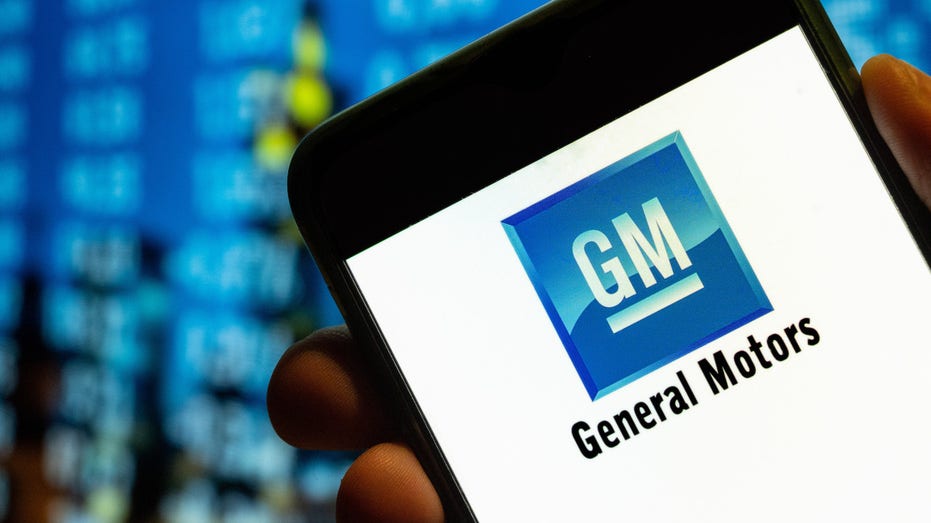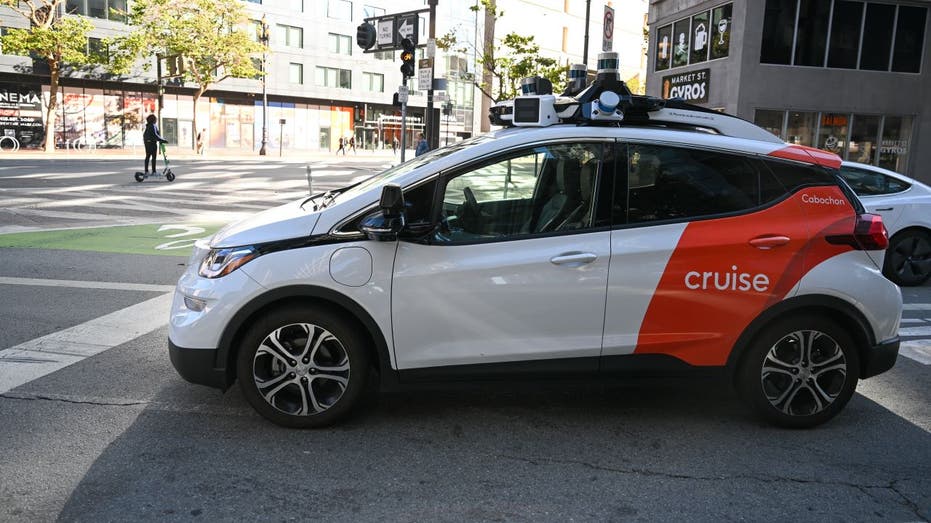GM's Cruise plans small relaunch of driverless robotaxis
Cruise has seen the exits of two top executives in recent days
Cruise car collides with San Francisco Fire Department truck
The driverless car allegedly did not yield to the firetruck's flashing lights as it went through the intersection on August 17, 2022. (Credit: John Freeman)
General Motors' robotaxi unit Cruise is planning to re-launch in one unspecified city before expanding to others, just weeks after California barred its self-driving vehicles from public roads following an accident last month.
Cruise last week paused all supervised and manual car trips in the United States while also expanding a safety review of its robotaxis, causing tumult within the company and compelling its CEO Kyle Vogt and chief product officer Daniel Kan to step down.
It is also a setback for an industry dependent on public trust and the cooperation of regulators. Cruise had in recent months touted ambitious plans to expand to more cities, offering fully autonomous taxi rides.

On Friday, the California Department of Motor Vehicles, which regulates the safety of the driverless cars, asked Cruise to halve the number of vehicles it was operating in San Francisco. (Cruise / Fox News)
"Once we have taken steps to improve our safety culture and rebuild trust, our strategy is to re-launch in one city and prove our performance there, before expanding," the company said in a statement.
GM'S CRUISE CEO KYLE VOGT RESIGNS FROM COMPANY
The GM unit said it would focus on the Bolt-based Cruise AVs in the near term with a longer term strategy around the Origin, a multi-passenger vehicle designed without a steering wheel or other controls for operation by a human driver.
It told employees in an email, which was read to Reuters, that it will also cut some jobs, "primarily in non-engineering roles" and would provide more details in mid-December.
A GM spokesman said its finance chief Paul Jacobson would likely address the financial impact on the automaker during a call with analysts scheduled for Nov. 29.
Before Cruise suspended operations, GM CEO Mary Barra had said Cruise and its autonomous vehicle technology could generate $50 billion in revenue by 2030, making the robotaxi business a big piece of her strategy to double revenue to $280 billion.

CHINA - 2022/07/25: In this photo illustration, the American multinational automobile corporation, the General Motors (GM) logo is displayed on a smartphone screen. (Photo Illustration by Budrul Chukrut/SOPA Images/LightRocket via Getty Images) (Budrul Chukrut/SOPA Images/LightRocket via Getty Images / Getty Images)
GM lost more than $700 million at Cruise in the third quarter and more than $8 billion since 2016.
Meanwhile, it now faces higher labor costs under a new United Auto Workers contract, slower-than-expected sales of its electric vehicles and costly new emissions standards from Washington.
EVS CREATE PROFIT POTHOLES FOR MAJOR US AUTOMAKERS GM, FORD
GM's troubles have led to a 16% slide in its shares so far this year, compared with a near 19% rise in the broader S&P 500 index.
| Ticker | Security | Last | Change | Change % |
|---|---|---|---|---|
| GM | GENERAL MOTORS CO. | 53.53 | +0.58 | +1.10% |
"Investors will be watching closely to evaluate whether management sees GM's challenges as limited to Cruise or if there is broader discussion about capital allocation across GM's portfolio," Morgan Stanley analyst Adam Jonas wrote in a note Wednesday.
NOT IN SAN FRANCISCO
GM and Cruise did not disclose the city where it would relaunch operations but it is unlikely to be in San Francisco, where the accident took place.
The incident involved another vehicle and ended with one of its self-driving taxis dragging a pedestrian. California authorities have pulled the company's license to operate driverless rides.
General Motors Co
Cruise has operations in Phoenix and Austin, where regulators have been more accommodating. Its rival Waymo too has extensive operations in the cities.

A Cruise, which is a driverless robot taxi, is seen during operation in San Francisco, California, USA on July 24, 2023. The self-driving service of âCruiseâ, the autonomous vehicle company owned by General Motor, is thought to be a step towards wide ((Photo by Tayfun Coskun/Anadolu Agency via Getty Images) / Getty Images)
As part of its previous expansion plans, Cruise had last year asked the National Highway Traffic Safety Administration (NHTSA) for permission to deploy up to 2,500 self-driving vehicles annually without human controls.
Without government approval, GM cannot deploy the Origin on public roads. The NHTSA said in July it "will issue a decision in the coming weeks" before the accident raised questions about safety.
GM, GOOGLE COLLABORATING ON GENERATIVE AI USES FOR AUTOMAKER
Cruise also said it would compensate employees for potential tax liability of shares granted by the company. It had last week decided to make a new tender offer to allow them to sell shares, two days after canceling an earlier offer.
Suspension of the program had sparked backlash from some employees who said they would face heavy tax burdens on the stocks that were vested at a much higher valuation on Oct. 15.




















